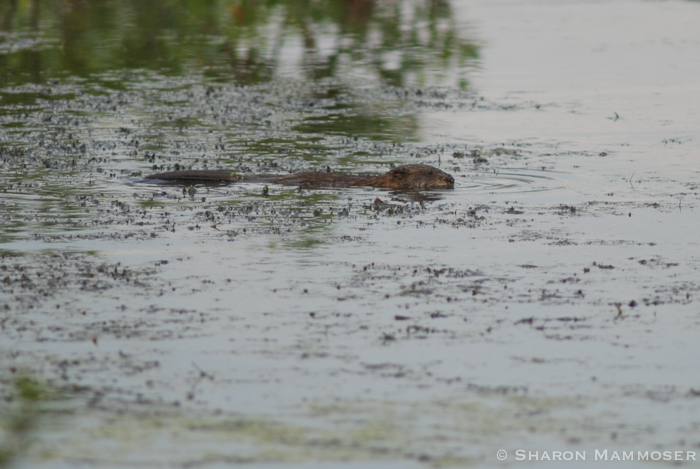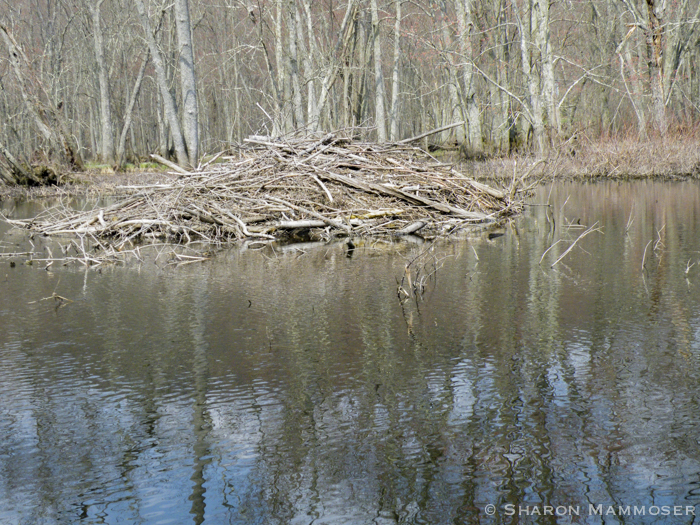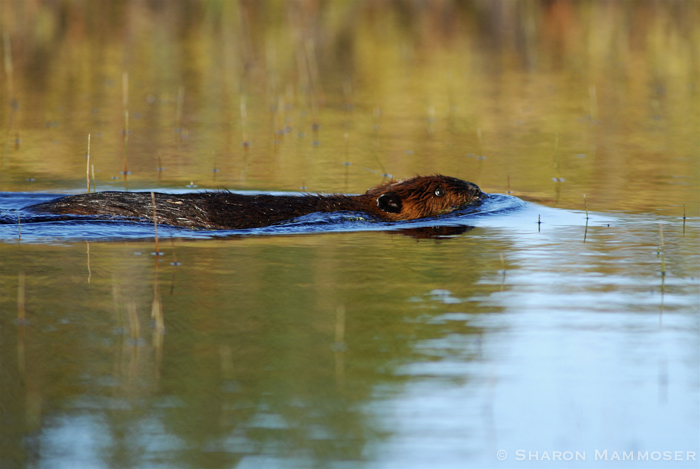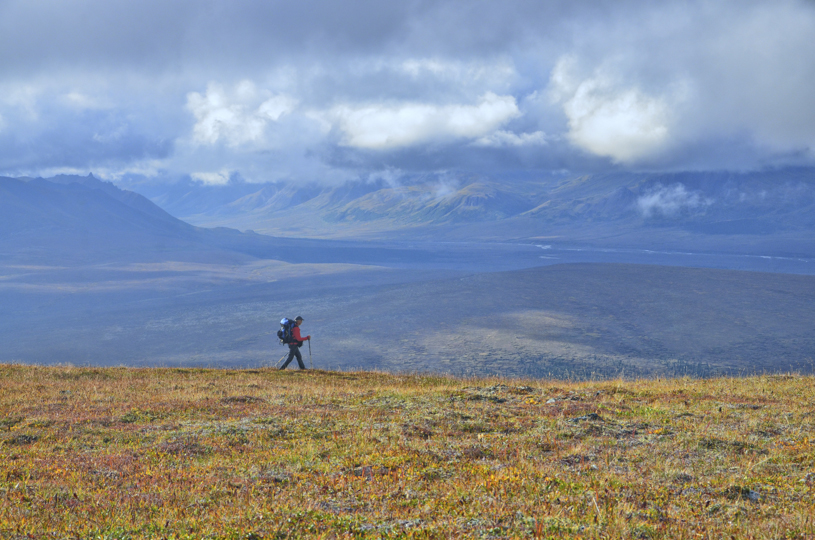 Most people could probably recognize a beaver from a picture but I wonder how many have ever seen one in the wild. If you are a kayaker or have taken a canoe out on a lake or river, it is likely you have heard one slapping its flat, paddle-like tail on the surface of the water. If you are not prepared for this, the sudden noise can cause quite a fright, sounding like a giant rock being thrown into a deep pool of water, the sound echoing across the lake. Beavers do this when they feel threatened, like when a predator is near and they want to warn other beavers. On a recent kayaking trip on the French Broad River, under the light of a full moon, I frightened at least 7 beavers, all of which slapped their tail repeatedly in protest of my unwanted presence.
Most people could probably recognize a beaver from a picture but I wonder how many have ever seen one in the wild. If you are a kayaker or have taken a canoe out on a lake or river, it is likely you have heard one slapping its flat, paddle-like tail on the surface of the water. If you are not prepared for this, the sudden noise can cause quite a fright, sounding like a giant rock being thrown into a deep pool of water, the sound echoing across the lake. Beavers do this when they feel threatened, like when a predator is near and they want to warn other beavers. On a recent kayaking trip on the French Broad River, under the light of a full moon, I frightened at least 7 beavers, all of which slapped their tail repeatedly in protest of my unwanted presence.
Here are some other interesting facts about beavers:
1. Beavers have a third eyelid that acts like a pair of goggles, enabling them to see underwater. Since this is where they spend much of their time, this is super useful!
2. Beavers build dome-like homes called lodges or live in the muddy banks of rivers. Their lodges are made of sticks, grass and trees they have cut down along with mud and have an underwater entrance that protects them from predators like bobcats, wolves and coyotes. Lodges have several rooms, all above the water level to keep the beavers warm and dry. 
3. Beavers do not hibernate in the winter, but stockpile fresh sticks and branches outside of their lodges that they feed on during the winter. If their body of water is not frozen or has open water, they will venture out during the winter to feed. They are herbivores, feeding on willow, aspen, alder, maple and other trees that grow near water as well as aquatic vegetation. Using their sharp front teeth, they chop down the trees, feeding on the inner bark and leaves and then cutting up the tree into manageable pieces that they use for dam or lodge construction. They are able to stay warm in frigid water because of two specialized layers of hair and glands that essentially waterproof their fur.
4. If a pond is not available, beavers will make one. This is a strong instinct for the beavers. They create a pond by felling trees that they then use to dam up a river, stream, or creek. Though their engineering can be destructive, it can also be beneficial as it creates new habitat for many creatures and can aid in flood control.
5. Beavers are mammals and the world’s second largest rodent. Theyare found throughout North America.( The largest rodent lives in South America and is called a Capybara) They can weigh up to 60 pounds
 6. Like all rodents, they have large sharp teeth called incisors that never stop growing. To keep them trim, they continuously gnaw on trees and branches. A beaver’s teeth can grow as much as 4 feet each year!
6. Like all rodents, they have large sharp teeth called incisors that never stop growing. To keep them trim, they continuously gnaw on trees and branches. A beaver’s teeth can grow as much as 4 feet each year!
7. Beavers waterproof their thick, luxurious fur by rubbing an oil secreted from scent glands at the base of their tails. They spend hours grooming themselves and each other.
 8. Because of large and specially adapted lungs, beavers can hold their breath for up to 15 minutes and can swim up to 5 mph. With their hind webbed feet, flat, paddle-like tail and third eyelid they are well adapted for their aquatic environment.
8. Because of large and specially adapted lungs, beavers can hold their breath for up to 15 minutes and can swim up to 5 mph. With their hind webbed feet, flat, paddle-like tail and third eyelid they are well adapted for their aquatic environment.
9. Beavers use their tails for a number of jobs, much like a swiss army knife. When swimming, the tail is used as a rudder, to steer them through the water, or to propel them deeper. On land their tails act like a kick stand, giving them stability when chopping down a tree. Fat is stored in the tail to help them make it through the winter and of course they use them to slap the water and warn of predators.
Audio Player10. Beavers mate for life or until some tragedy separates them. Young, called kits, are born inside the lodge in early May and will remain with their parents for two years. Kits can swim on their own within 4 days of their birth.
Do you have anything to add? Have you ever seen a beaver? Please feel free to use the comment box below to share your stories of beaver encounters!


I live on the Hiawassee River in NC and see beaver frequently. Despite many trees along the river they recently have started to eat my landscaping trees; maples, Leland cypress, Bradford Pear, etc. Not wanting to harm these critters we came up with a successful solution. We placed a battery operated motion detection spot light where they were coming up the bank of the river. It worked!
Yes, it seems beavers have a special fondness for trees people plant in their yards, over wild trees. Great idea on the motion detector!! I will pass this along to others who might have the same problem! Thanks for sharing.